The ultimate beginner controller?
The Hercules DJControl Inpulse 300 is an entry-level controller that takes aim at the beginner DJ’s who want a controller to help develop their beat matching skills. With built-in tools to help DJ’s learn the basics, does this budget-friendly controller do enough to sway users away from the bigger brands? Let’s find out!
The Build
Just like all controllers at this price point, Hercules has opted for a full plastic construction with the Inpulse 300. The controller is 48cm wide and 29cm tall meaning it is almost identical in size to the rival Pioneer DDJ-400 and SB3 units with a very similar layout.
The large 14cm jog wheels are touch-sensitive but unlike rival controllers, you can turn this feature off on the controller itself thanks to the dedicated vinyl mode button.
You won’t require an external power source for the Inpulse 300, the computer is powers the unit. The braided USB B cable that Hercules include is very nice indeed. Making us question the quality of cables that come with controllers five times the price of this one!
Finally, it’s worth noting the hard plastic used for all the buttons on the controller. This plastic feels a bit cheaper than that used in rival units but all the buttons are highly responsive, even if they are quite noisy in operation.
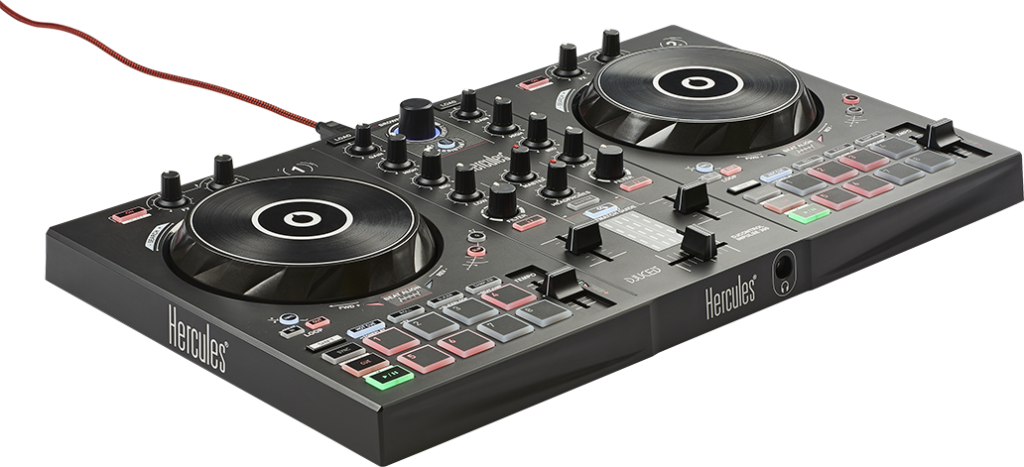
The Decks
At the top of the two-deck sections, Hercules has placed dedicated controls for the inbuilt effects. You can turn the effects on and off, change how much effect is applied (wet/dry) and how often the effect repeats (beat value). Unfortunately, there is no way to change the effect from the controller itself, you’ll need to do that on the computer.
Hercules has opted to include dedicated buttons for the slip and quantize functions which are quite rare for a beginner controller. Slip Mode is a feature that when turned on, enables you to manipulate the playback of the selected track (Scratching, looping etc). Once finished the track will return to where it would have been if you had not done anything. Great for scratching and momentary effects.
Quantize when enabled will take the DJ’s action on buttons and snap them to the beat grid. So even if you are pressing play in-between two beats, the software will move your action to the closest beat, helping the DJ stay in time.
These functions are nothing new in DJ software but having dedicated buttons for them on the controller at such a low price point is quite unheard of. It’s a great move as we often see DJ’s accidentally activate these functions and struggle to know where to turn them off.
Beat Match Guide
Arguably the most significant selling point of the Hercules controllers is the beat match guide functionality. Each jog wheel and tempo fader features a set of small red LED arrows that light up. The lights inform the DJ that the track needs either speeding up or slowing down to match the master deck. It is a brilliant tool and works well. Once the DJ feels comfortable, they can disable the functionality with the button found in the centre of the controller.
Looping
Above the cue and play buttons are the dedicated loop controls. Simple IN and OUT buttons can be used to manually set a loop, or you can hold the IN button to set a four-beat loop.
Inside the DJUICED software, the loop buttons automatically start precisely on beat, even with the Quantize feature turned off. This odd quirk is due to a setting called SNAP, which can be changed between 1, 1/2, 1/4 beats or completely turned off in the settings pane.
Performance Pads
The Hercules Inpulse 300 features eight rubberised pads per deck which feel much nicer than the plastic used elsewhere on the controller. Equipped with eight modes, this beginner controller is surprisingly capable!
Hot Cue, Roll, Slicer, Sampler have have buttons above the pads. Press and hold the button to access the secondary modes which include Tone play, FX, Slicer Loop and Beat Jump.
The cue, play and sync buttons are very close together. We do find ourselves accidentally hitting sync instead of cue occasionally. It’s a shame as we are sure the design could have optimised the available space better.
The Mixer
In the middle of the controller is the mixer, which makes good use of the space. The faders are small, but they respond well, sitting either side of a full VU meter.
The VU meter flashes green and red to show you the volume of each channel. Having visual feedback on the levels of not only the master, but the two individual channels as-well is rare at this price point.
The mixer features dedicated knobs for the gain, high, mid, and low frequencies, and a high/low pass filter on each deck. These controls act like an EQ rather than an isolator, meaning that they leak sound even when fully off.
The crossfader is software controlled and can be changed between mix and scratch modes as well as being completely disabled in the settings should you not wish to use it.
Browse Controls
The browse knob at the top of the mixer allows the DJ to browse their library without having to touch the laptop. The colour changing LED surrounding the knob gives visual feedback when using the inbuilt assistant. The assistant tool suggests songs based on your currently playing track. These suggested songs are then colour coded by their “energy” level. Tracks coloured in red are high energy, peak-time songs. The colours then fade through orange, yellow and finally into the blues, which are seen as mellow.
We found this a little gimmicky and not always accurate, but it’s a nice touch for those moments when your mind goes blank. Loading tracks into the decks is smooth thanks to the dedicated buttons found to either side of the browse controls.

The Outputs
Just like all controllers at this price point, the Inpulse 300 uses a pair of unbalanced RCA connections to output the master to speakers. The headphone connection is the smaller 3.5mm jack recessed into the controller’s front. This will most likely support the headphone jack more to help prevent snapping. However, some headphones may struggle to fit inside the recess.
There is a mysterious port on the rear of the unit labelled “Hercules Add On” suggesting that the Inpulse 300 could be connected to a separate device. However, at the time of writing, we are yet to see such a device.
DJUICED Software
DJUCED is the software bundled with the controller for free. Hercules has managed to keep the overall price low and the functionality high by developing their own software. The main selling points of the Inpulse range such as the beat align guide and virtual assistant, are software controlled. This means using the controller with other platforms would render these functions useless. However, if you would like to try other software you can download mappings for Virtual DJ, Algoriddim DJay and Traktor Pro 2 from Hercules’s website.
The library management in DJUCED does a good job overall, it even features smart playlists. Streaming is available but only by Qubuz. We would like to see more added such as Tidal or Soundcloud GO in the future.
The DJ Assistant
The DJ Assistant tab within DJUCED is a pop up that allows users to watch tutorial videos on how to master the basics. The ability to minimise this into the smaller window and play along whilst the tutorial plays is brilliant. The DJ assistant’s pop-out interface is slick and easy to navigate. Unfortunately, the same can’t be said for the overall look of the software. It’s not terrible but DJUCED looks like the older versions of Virtual DJ and in 2020, we know better can be had.
Our only gripe with DJUCED is that the platform is quite limited. It’s only compatible with Hercules controllers, so it’s not a software you can move forward with. Serato, Rekordbox and even Virtual DJ will provide a library and software platform that you can use with more expensive equipment as you progress in your DJing.
In Conclusion
Considering the price of the Inpulse 300, it’s a controller that should be high on any beginners wish-list. It’s simple enough to teach a new DJ the fundamental basics. Plus it boasts enough performance tools to then still be useful whilst transitioning to more advanced skills.
It’s worth taking a look at the Pioneer DJ DDJ-400 controller, as this shares many of the same performance features. However, the Pioneer DJ unit lacks the fantastic beat guide and assistant tools. It also costs around £80 more which is a significant increase.
With all that in mind, it appears that Hercules is on a bit of a roll with its Inpulse range of controllers. Ditching the outlandish looks of their previous models, they have created a credible option to the more expensive competition. It’s just a shame we can’t use the controller with Serato as the DJUCED platform will inevitably have to be left behind as you progress.
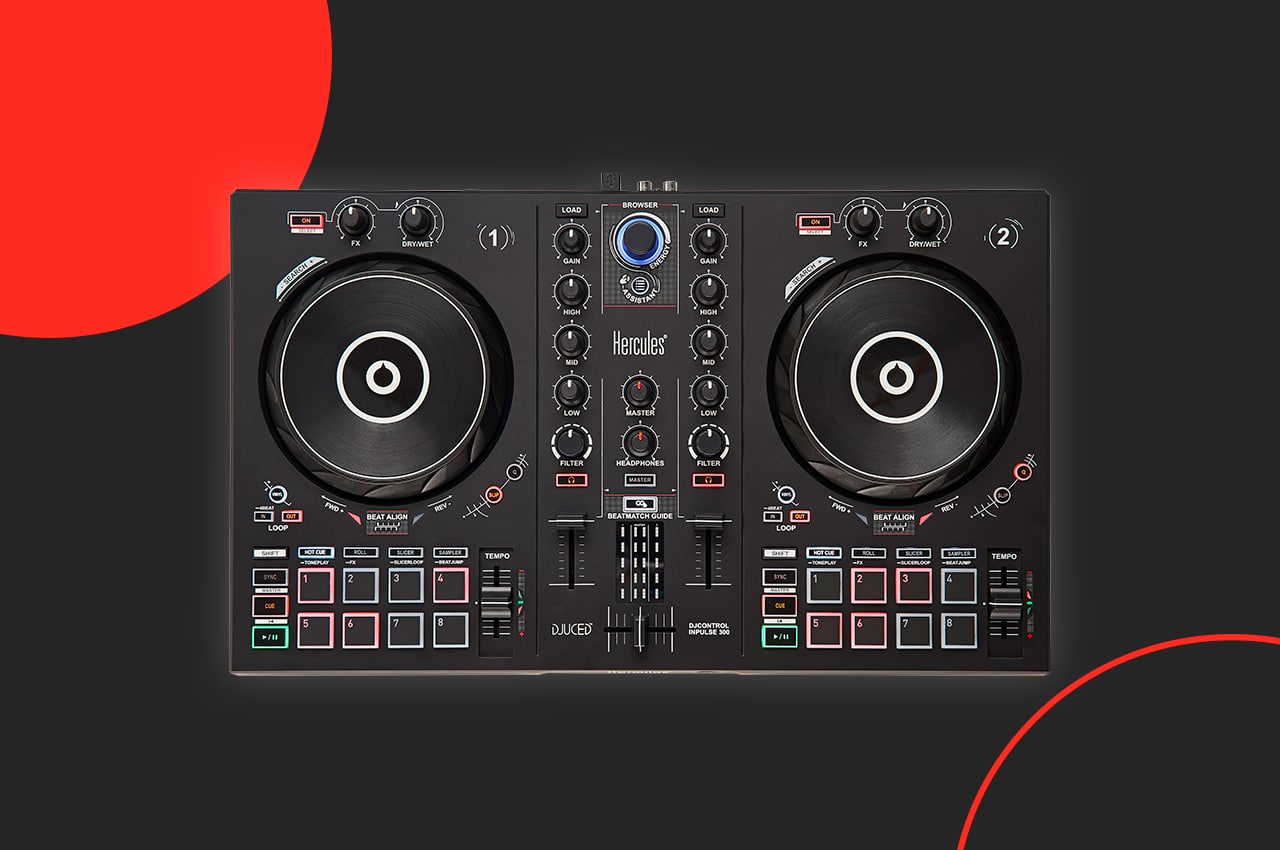

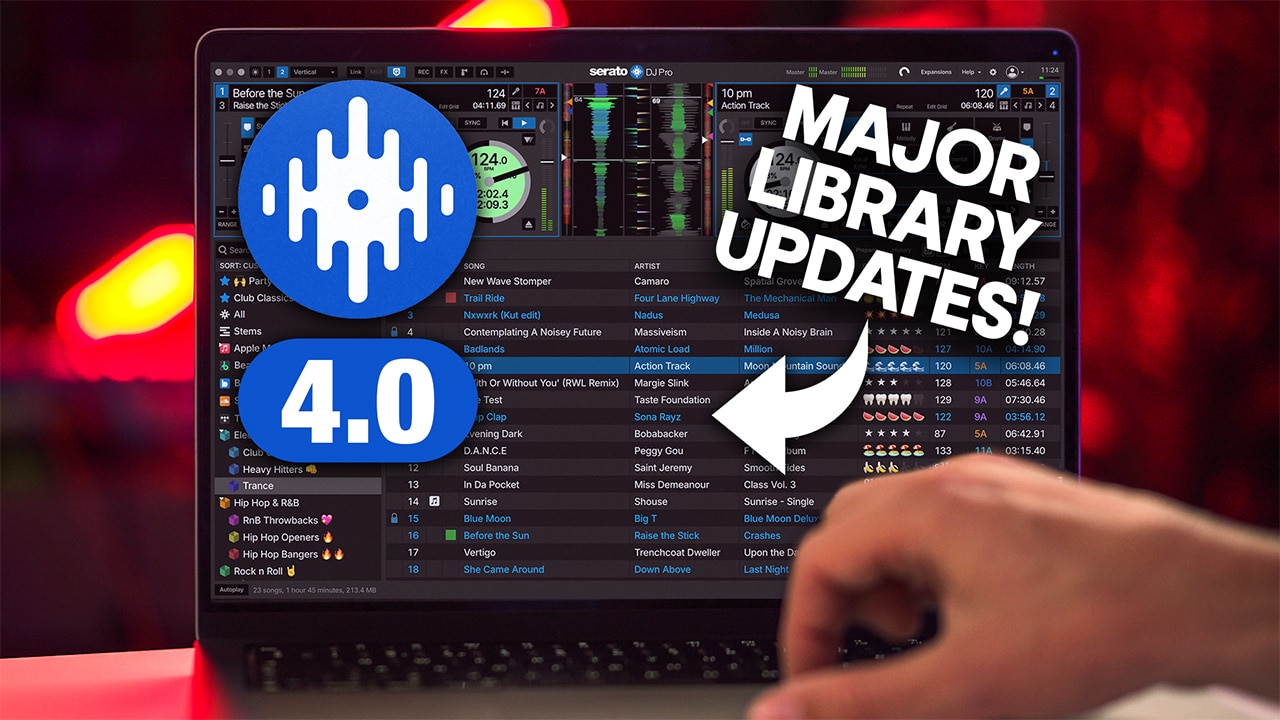

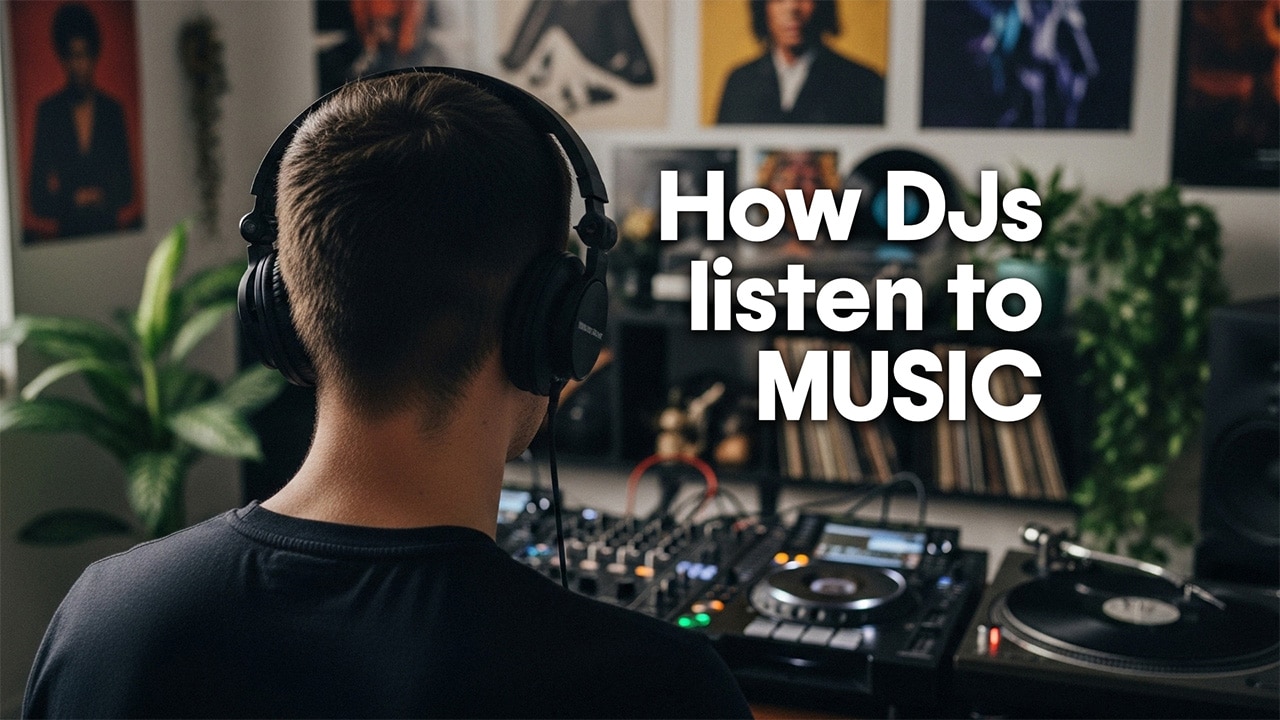
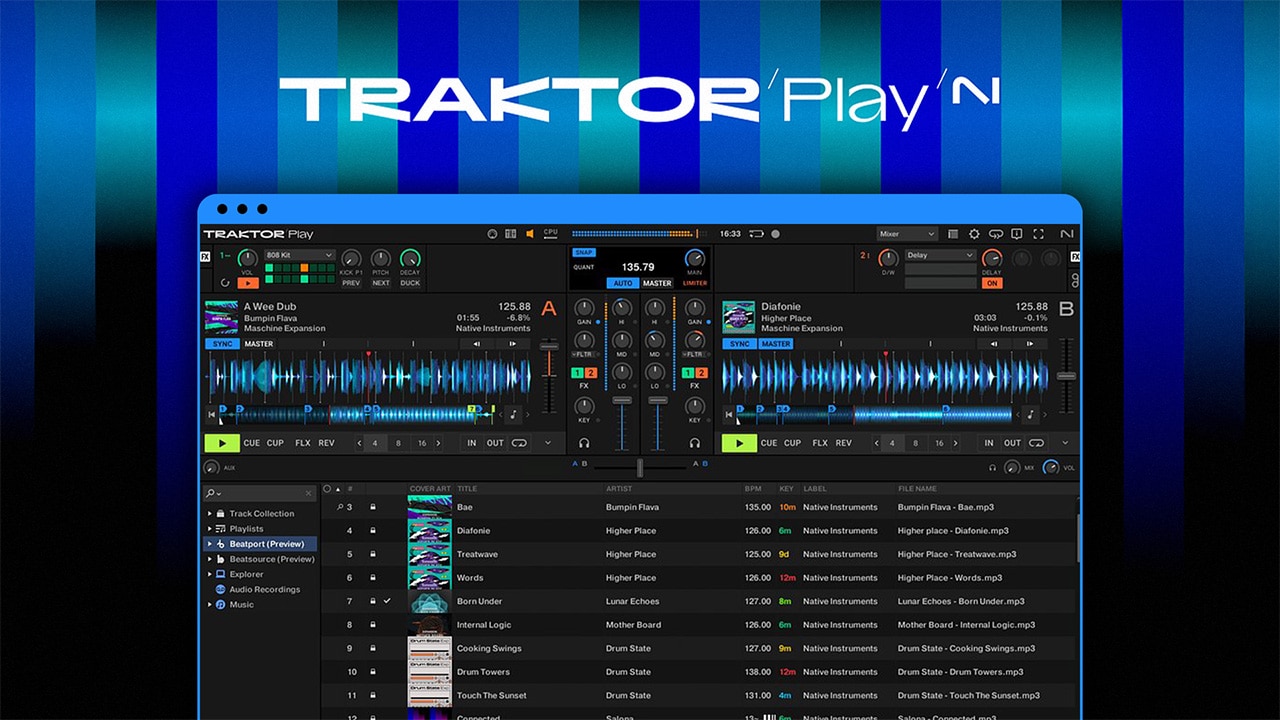
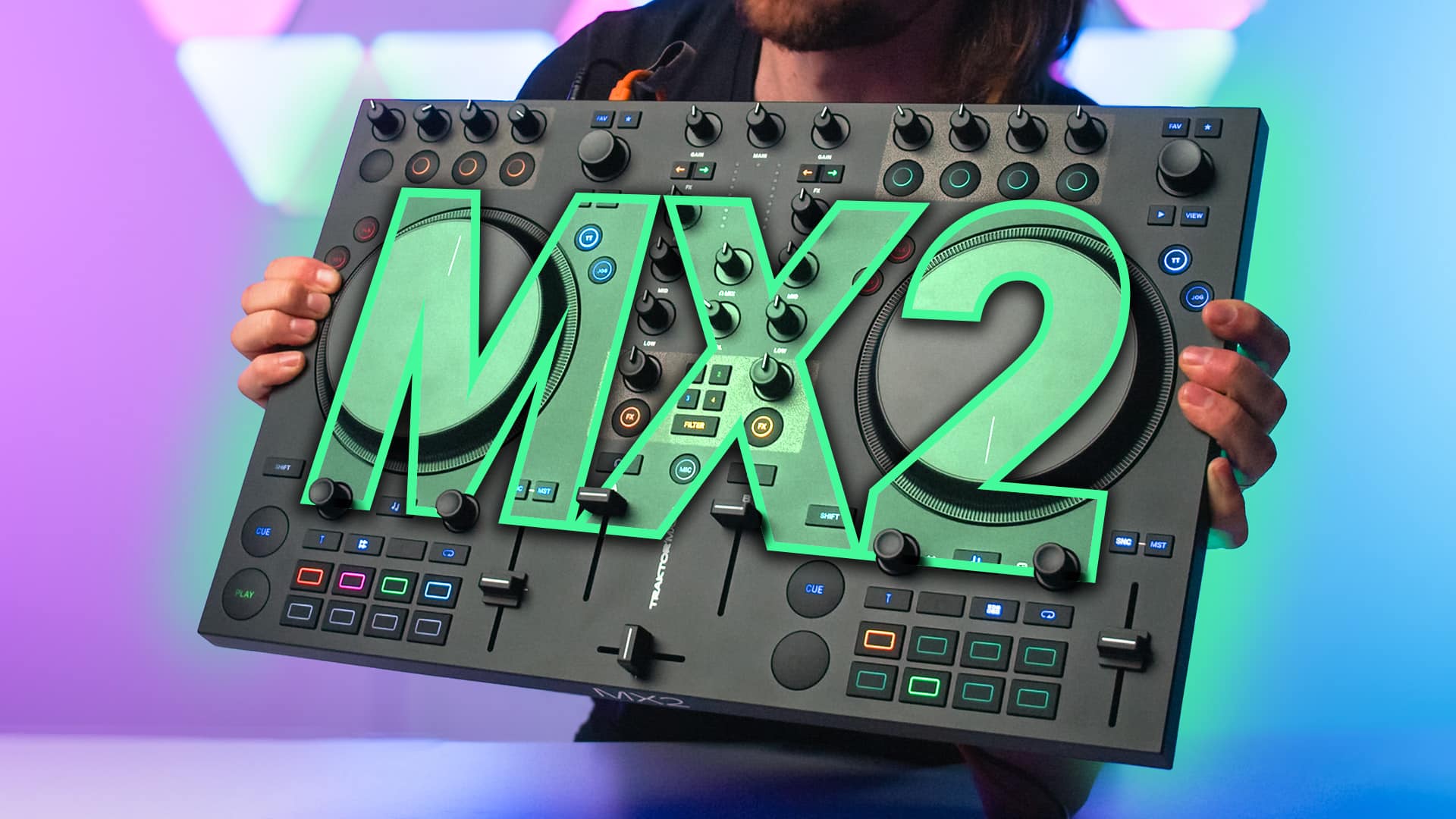
0 Comments